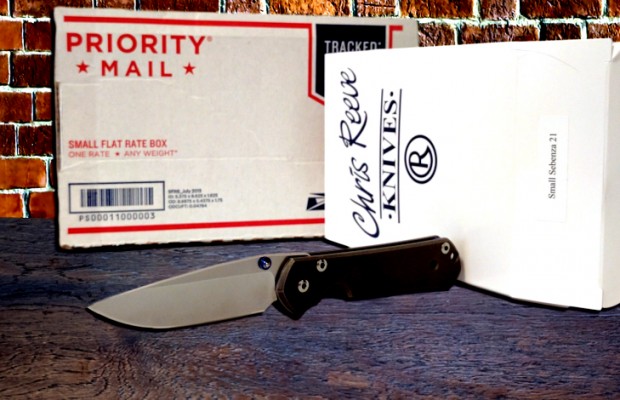Six Tests to Check a Liner Lock Knife
How do you know that your liner lock knife is going to withstand the pressure? A solid liner lock is fantastic. But if your liner lock fails, it is possible to suffer some serious damage to your fingers and or hand. Before you get too cozy with your new liner lock knife, it is a good idea to test it so you know it will stand up to the situations your knife will face. And remember, just because you paid a bunch for your knife doesn’t mean it has a great liner lock. Some of the least expensive knives I have come across have well-built liner locks. I conducted all of these tests on the Spyderco Military knife and was impressed. It passed with flying colors.

Spyderco Military Liner Lock Knife
Here are six basic tests you can conduct on your liner lock to verify if it is well made and durable. These tests will work for manual folder liner lock knives. Some of the tests will not work on a spring assisted liner lock knife. These six tests should be fine to conduct on any manual folder liner lock knife. If the knife fails any of these tests, you shouldn’t have broken anything and you should be able to return the knife with no issues.
First, when the blade is open, try to wiggle it back and forth. Here you are checking for blade movement. If there is play in the blade it means the pivot screw isn’t tight enough. Tighten the pivot screw until all the movement is gone when you conduct this test. If the pivot screw is loose, it may be that it just came loose, or it could be the sign of a dirty trick. Some knifemakers will loosen the pivot screw enough that the liner lock operates smooth even though the blade isn’t tight. By tightening the pivot screw to the proper tension, you can then test the liner lock under the proper conditions. Now, conduct the rest of the tests to see if you have a great liner lock knife.
Second, test the action. A well-built liner lock will open smooth and lock up very strong. You should be able to open and close it with just one hand–closing is a bit more tricky but after a few tries you should be able to get the job done.
Third, open your blade. Then close it slowly. As you close the knife, just before the blade is all the way back into the knife the blade should close all by itself. To really test this, you have to close the blade very slowly. What happens is the detent, if it is constructed properly, “grabs” the blade and seats it into the closed position.
Fourth, open your blade very slowly. Get it all the way open with the least amount of effort you can put into it. DO THIS NEXT STEP CAREFULLY! Now that the liner lock has the blade in the locked open position, press on the back of the spine with moderate pressure. You are testing the liner lock to see if it seats into the locked position properly when the blade is opened very slowly. A poorly built liner lock will give or fail with this pressure. A well-built liner lock will seat properly when the blade is opened lightly.
Fifth, open the blade with as much snap as you can. Now that the blade is locked open, try to close the blade (release the liner lock) with one hand. If you can, it is a well-built liner lock. Here you are testing to see if the liner lock face and the blade lock face seat the same whether you open the knife hard or soft. If you can’t open it with one hand after opening the blade fast and hard, the two faces are seating deeper than they normally do and this is a good indication that the mechanism is not built properly.
Sixth, grab your knife in a gorilla grip. This is where you have the blade open and you fist the whole handle like you are under serious duress. ONCE AGAIN, BE VERY CAREFUL with this test. Now that you have the handle in a full hand grip, put some pressure on the blade. Put some up and down pressure as well as some side to side pressure. Here you are testing whether a full hand grip mixed with pressure on the blade will allow your hand to “accidentally” release the liner lock, the results of which would be very painful to the back of your fingers.
Check your knife before it matters. That way, you know that you have a well-built liner lock knife that is not going to fail at the first sign of trouble.



